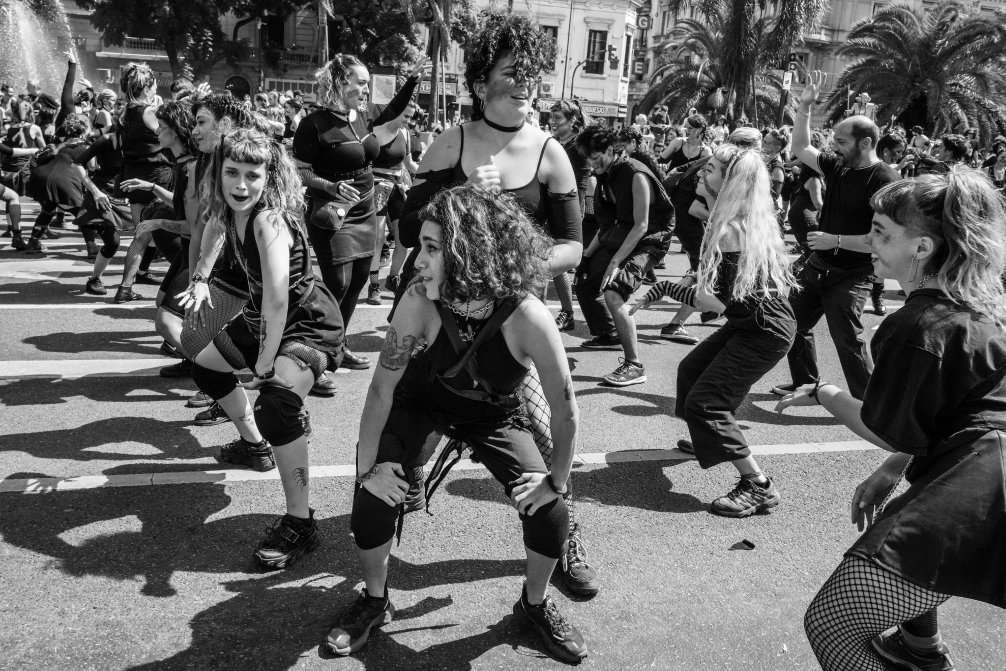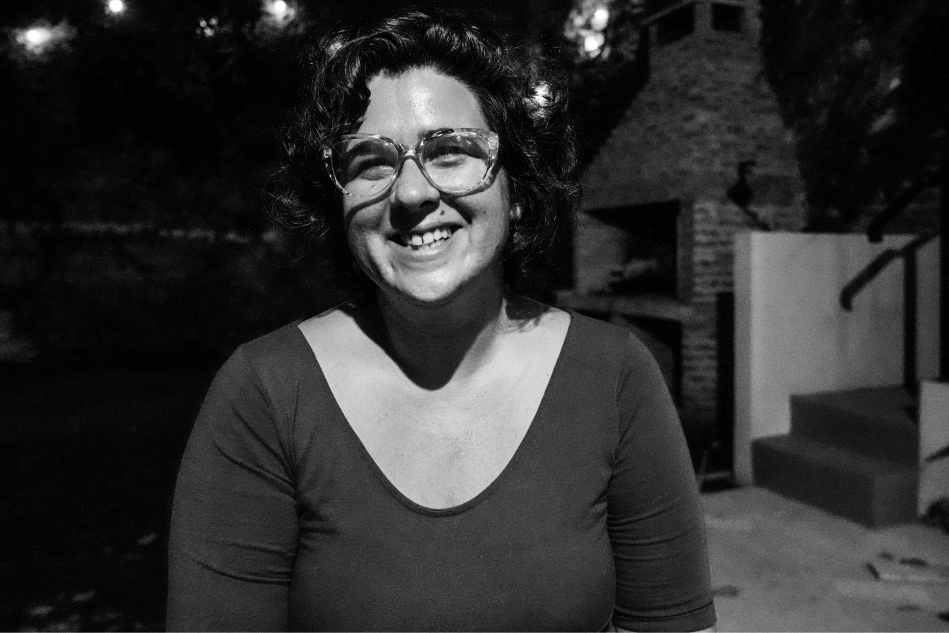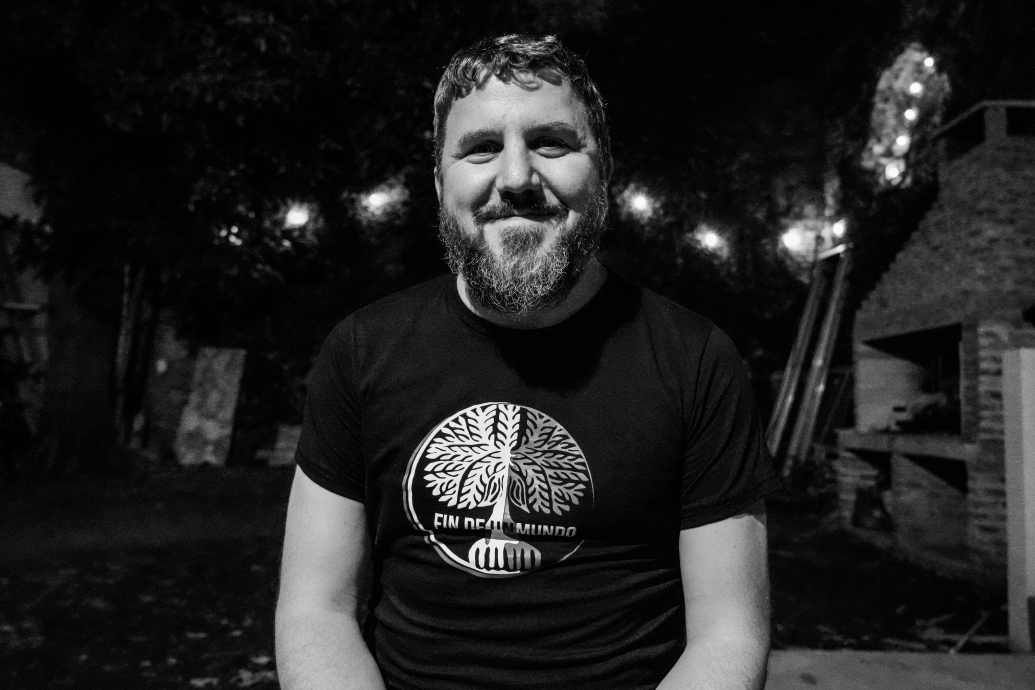March 24, the anniversary of General Videla's military coup, has been declared a Day of Remembrance for Truth and Justice to pay tribute to the 30,000 dead and missing during the bloody military dictatorship (1976-1983).
On that day, tens of thousands of people took to the streets to say "Nunca más" ("Never again").
On March 24, 2022, I happened to see a street performance by over 100 dancers that blew me away. I'd never seen a street performance of such force and magnitude. I was told it was the Colectivo del Fin de Un muNdO (FUNO). At first I thought it was a professional troupe. In fact, not at all. It's a group of self-managed volunteer activists.
On the Internet, they are presented as follows:
"We are an artistic-political, self-managed, plural and independent collective that acts poetically in the public space with the aim of questioning reality, because we believe that another world is possible if we make it possible."
The following year, in 2023, I had the immense privilege of attending some of their rehearsals and interviewing participants. I was able to discover richness and originality of this group. The experience left me with boundless admiration. It perfectly illustrates what I want to emphasize in these chronicles: the extraordinary human qualities of the Argentinians.
Let me give you an initial overview of the most striking aspects of this Collective
All photos and videos are from rehearsals on March 17 and 24, 2023.


A POETIC-MILITANT LANGUAGE
"Researcher Luciana Infantino defines Colectivo as "a movement of artists dedicated to intervention in public spaces with high-impact scenic actions that draw on multiple artistic languages (performance, theatricality, dance, music, audiovisual and others)."
Sebastián, who has been involved with the collective since its inception, explains:
"From the outset, we wanted to form a collective with the vocation of carrying out strongly political urban interventions, but with a different language, starting from poetry and always with bodies in action, usually in public spaces."
"Despite the fact that I had significant political experience, It was a surprise to come across a collective language that could move people and take them to another point of view. I was the first to feel challenged. I became aware of the power of this collective poetic language that provokes deep emotions, that shakes people up."



It is this language that attracts new participants every year, as in the case of Marta Candela, a performer :
"A friend brought me to the collective three years ago. And that's when I discovered my passion for combining theater - because I'm an actress - and street activism. I discovered that there was something to be said collectively. The show initially moves those who are part of it, but from then on, it moves the spectators. Sometimes there's no need for so many words; an image is more powerful than a speech."
This is also the case for Pilar, another performer:
"I've been marching on March 24 since I was 20, when my Trotskyist aunt first took me to the march. Since then, I've always accompanied her. When, thanks to a friend, I saw FUNO for the first time in 2016, I found what I was looking for. A march in defense of truth, memory and justice approached from an artistic and collective point of view. And I started marching with them every March 24.


Pilar recounts her experience of rehearsals before the Day of Remembrance :
"How do you feel during rehearsals? You're very tired from dancing and jumping for 4 hours. But at the same time, dancing collectively, with like-minded people, generates immense joy. All those Sundays felt like a happy ending. There were Sundays when I was active, but when the fatigue started to creep into my body, it was terrible.. "

A year after the coup, the Madres de la Plaza de Mayo began marching past the presidential palace every Thursday to demand justice and truth, despite the repression. The white scarf is their symbol.
"During rehearsals, other emotions are also generated, such as sadness and anger, for example when listening to certain audios that will be part of the performance, such as the junta's first communiqué on the day of the coup. Passages that generate pain, not everything is happy. There's also sadness, which brings a depth of reflection. So there are very mixed feelings."
THE FRUSTRATED PARTY
Patricia explains how the Remembrance Day Walk was prepared:
"For the March 24, 2023, we got together at the end of January to start thinking about what we wanted to say and the issues we wanted to focus on this year. Structural issues such as the repudiation of dictatorship, the demand for the return of the disappeared alive, memory, truth and justice are themes that run through everything we do. But there are also new struggles, feminism, natural resources, and other topical issues, which we integrate into our actions.

"This year's opening theme was The Party. This year marks the 40th anniversary of the restoration of democracy and we have to celebrate it. There's a party, but we want it to be our party. We don't want a world we're not part of. We want to show that it's a party that's spoiled by all the unresolved issues we have as a society, the issues that have interfered all our lives in the opportunity to build a better world. And then there are always new aspects that appear, like the Milei phenomenon,(a Trump-style presidential candidate) the injustices that continue to happen, the things that shouldn't happen in a democracy, like the disappearances that continue. We talked about all this while dancing."

The meeting, the party, the fact of being together, is something we show in parallel to everything else, to what tries to divide, to make invisible.
"Dogmatism and resignation prevent art from being made".
Liliana Bodoc
"We also draw on the texts of Liliana Bodoc and Vicente Zito Lema, who serve as our foundation, constantly inspiring us and always present in what we do. We have their voices recorded and use them with other texts, mixed with the music. The songs, which in a way represent what we want to say, and the sound are very important in our performance, they participate in the creation of strong images."

AN EXCEPTIONAL CONTINUITY
The Collectif has been in existence for 11 years, a remarkable longevity for such an undertaking.
Sebastian and Caroline, activists from the start, tell us about the circumstances that led to the beginning of this special adventure:
"In 2012, a group of us created a cultural center called "José Martí". We were in contact with the "Tres gatos locos" (Three Crazy Cats) theater troupe, who had done some urban interventions in Latin America, always on October 12. In 2012, they were in Buenos Aires and came up with the idea of a large-scale urban intervention, amplified by texts by Liliana Bodoc. "

They put out an open call, and at the first meeting there were 100 of us who didn't know each other, many of them from the theater scene. The proposal that emerged seemed impossible: to stage a street event, almost theatrical, in the center of Buenos Aires, without any form of support or funding. We had a van and transformed it into a caravel, symbolizing Christopher Columbus's landing.

" We spent months and months preparing this intervention, which was called "10.52 End of a world". Why this name? Because the Mayans predicted that a great change, the end of a cycle, would take place in 2012. And why 10.52? Because 52 is a Mayan symbolic number, and 520 years, or 10×52, have elapsed between 1492, the year Christopher Columbus landed, and 2012! "

What are we celebrating on October 12?
Until 2010, October 12 was known as Race Day. It celebrated Christopher Columbus' landing on the island of Bahamas on October 12, 1492.
In 2010, the government changed its meaning and name: it is now called the Day of Respect for Cultural Diversity, in homage to the original peoples of the Americas, victims of the arrival of the Spanish colonizers.
" We didn't know each other or have any common experience, but we all had something to contribute, some of us coming from theater and dance backgrounds, others with very strong professional experience, and still others with extensive street organization experience. Gradually, we became aware of the power we all had together. "
" We've decided to call ourselves "Collectif de la fin d'un monde". What world? This world of poverty, oppression, violence and confinement. "
" That's how we came up with this intervention, designed not to be repeated. "
" The event was magnificent, we set off from Callao and Corrientes on a Friday evening, went from there to the Obelisk, went up to the Plaza de Mayo, crossed the most important avenues of Buenos Aires, all with a van transformed into a caravel, filled with people. We burst onto the scene with a performance that no one was expecting, with over 100 people taking part and around 200 accompanying us. People looked at us and didn't understand a thing. Even the police didn't understand. They asked us: "Are you from a political party? Where are the flags? At first they wanted to chase us, but then they backed off. "

" It was a magical intervention. Afterwards, we were all so enthusiastic that we decided to form a collective.
Over these 11 years, we've enriched ourselves, evolved and tried new things. The Collectif has always mutated, grown and expanded, with many new people. Today, very few of us took part in that first intervention, and many of us don't even know it anymore. Which we think is great, because our idea is for the Collective not to cling to the past, but to maintain its own life."
One of the secrets of this collective's longevity is its ability to adapt to change, while respecting its original principles.
In the next blog, I'll look at other outstanding aspects of FUNO
A brief portrait of the militants generous, creative, enthusiastic, authentic, selfless (Part One)
Patricia (Pato)

I joined the Collectif almost from the start. I'm a teacher, working in a lycée and at the Alliance française as a French teacher.
I've found here a place of support, many friends, the possibility of inserting myself into a space that represents me, a place where I can express my opinions without being in a political party. It's a way of making politics through art. In this collective, I've found a place to belong.
I believe that when you have something to say, every space is a form of activism. Simply saying to children "let's work in groups and do something cooperative, collective" to teach them to establish other types of relationships, is for me an act of micro-militancy. I can't conceive of any other way of doing things than collectively. I try to make this present in every aspect of my life.
It's my form of militancy.

I'm a teacher and actress. I work as a drama teacher in two secondary schools. As an actress, we revive a play called "Inocente colectivo" (Collective Innocence), which deals with institutional violence through black humor. With the proceeds, we hope to be able to continue going out into the neighborhoods and different places, where we don't charge for tickets, to bring theater to places where it doesn't reach.

I've been part of this collective since the beginning, in 2012. I came more from the side of social activism than the artistic side.
In the collective I take care of logistics and sound.
I started university several years ago, but had to give it up because I've had to earn a living since I was very young. I'm currently employed in an office where I work in systems. Daily life isn't very pleasant, which is why these spaces for activism are so important.
For me, the Collectif is a vital experience.

I've been part of the Collectif since the beginning and participate in the identity group. I'm a community-oriented psychologist. I've been working for 8 years in the municipality of La Matanza, as a psychologist and also in the organization of artistic actions with neighbors.
For the past few months, I've been coordinating La Matanza's mental health network, trying to broaden the proposals through an art and health network. Before working at La Matanza, I studied art and social transformation. I also devote myself to music, recording my first solo album. One of the songs I composed is called "En circulos" and we used it for the first action. I'm part of a project called "Mujertrova" (Women's Trova), made up of female troubadours who are "cantaautoras" (autria singers) of social songs.

My background is in teaching, but I now work in a museum of the history of education. I joined the museum in 2019. I don't have an artistic background, but I was attracted by the proposal, the collective organization, the concrete themes and objectives of performing in the street.
Then, out of affinity, I joined the Communication circle. I get emails from people who have seen us and say "next year, I want to be there". For the new world we want, this transmission is important. I still get goose bumps!



Leave a Reply